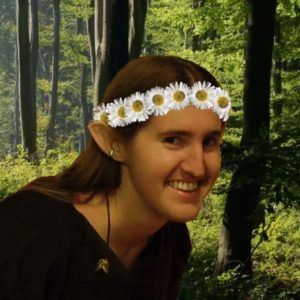The Real Halloween
The origins of Halloween are a bit different than the fun-filled holiday we celebrate today.

Everyone instantly recognizes the familiar Halloween signs: witches on broomsticks, black cats, spiders. We wait for the costumed trick-or-treaters to come knocking at our doors requesting sweets (well, out here in the country, we wait, but they never actually come 😉 ). Carved jack o’ lanterns adorn every doorstep. This is Halloween, one of the most beloved Holidays in America.
For many people it is a day to step into costume and become someone else entirely. For others it is an excuse to show off their artistic talents carving squashes. And for still other it is an opportunity to perform mischievous pranks in effort to scare the living daylights out of another person.
For most it is a holiday to celebrate the spirit of fun, though there are a few people here and there who condemn it as an evil holiday due to its emphasis on magic. Nothing could be further from the truth, however, as many of the more “evil” symbols associated with the holiday came centuries after the original celebrations.
Hundreds of years before Christ, the Celts ruled Europe. Like many of the ancient cultures, the Celts had holidays celebrating the changing of the seasons. Of all those holidays, the most import was the end of the year festival.
The ancient Celts recognized only two actual seasons, summer and winter. They also felt that the start of he day was at sunset rather than sunrise and consequently that the start of the new year should be during the darker months of the year. In the Celtic calendar, the end of summer, and thus the end of their year, occurred when the sun reached 15 degrees Scorpio. The festival was called Samhain, which was Gaelic for “summer’s end.” This date is roughly around October 31.
Samhain night was a time of remembrance of the dead, as the Celts believed that on the last day of the year, doors were opened into the Otherworld. This could also be a very scary time as the Celts feared that evil demon spirits might be able to pass freely through the open gates as well. In effort to keep evil spirits away, the Celts would dress themselves as demons and lead huge parades out into the wild in hopes that any evil spirits would follow them and stay out of the villages, while the good spirits would easily be able to remember the way to their former homes. This custom eventually became the trick-or-treating we have today.
As the Celtic new year, Samhain was one of only two days that people could extinguish their hearth fires (the other day was Gamhain, now often known as May Day, which meant “winter’s end.”) It was considered unlucky to let the fire go out any other time of year. The druids (Celtic priests) would build huge bonfire on top of hills to give thanks for the bountiful harvests of the light half of the year and to encourage the sun to return after the dark half of the year. It was considered very good luck for people to restart their hearth fires with coals taken from the druids’ bonfires. The Celts would carry the coals home in hollowed out turnips. To keep any evil spirits at bay, they would carve scary faces in the turnips, a practice which eventually evolved into our current tradition of carving pumpkins.
With the coming of Christianity, the holiday began to change. The Christians originally planed to convert everyone and leave the old ways behind, but they soon found that some of the Celtic customs could not be so easily washed out. Knowing that the Celts would never embrace the Christian faith as long as they still held so closely to their own traditions, the Christians decided to meld the Celtic beliefs with their own in a sort of “if you can’t beat ’em, join ’em” effort to ensure that the Celts would be converted. The two most notable examples of this were the greatly revered Irish goddess Brigid, who the Christians turned into their St. Brigit, and Samhain, which the Christians turned into All Hallow’s Eve.
Keeping with Celtic tradition, the Christian holiday of All Hallow’s Eve was the one night of the year when the spirits of the dead could walk the earth. However, they gave this holiday the set day of October 31 to remove the pagan astrological associations. They also labeled the druids as devil worshipers to prevent them from restoring the original holiday traditions. (They were not actually devil worshipers; there is no devil in Celtic belief). In time the new holiday’s name was shortened to Hallow’een (this spelling is often seen on vintage Halloween postcards), and eventually the apostrophe was removed altogether giving us the Halloween spelling we have now.
As time progressed, different generations and cultures have added their own traditions to the holiday giving us the familiar celebrations we have now. Perhaps this year as we carve our pumpkins and don our costumes, we should take time to reflect on those people so long ago who did the very same things. In doing so, we will be remembering those who have gone before us, and thus we will be celebrating the day just as they did so long ago, albeit without the fear of evil spirits 😉.
By Amber Reifsteck, The Woodland Elf
The information provided on this website is for general information purposes only. If you choose to rely on the information on this website, you do so at your own risk and you assume responsibility for the results. (Full disclaimer here)
Enjoy this post? Click here to subscribe by email and get new posts delivered to your inbox.Ads by Google







